I'm very active on a yahoogroup that discusses the book Nourishing Traditions and all things traditional foody and health realted (shout out to DiscussingNT - woot woot!). When people first join the list they invariably ask one of three questions - "How do you do ALL of this??" "How do you make Sauerkraut??" and "Does anyone have a GOOD sprouted or soaked bread recipe??". I've only been blogging for a couple months and feel like I've addressed the first two. Now I'll address the last one.
Most of us in America grew up on some variation of fluffy, sweet, soft bread and pastries. My mom made sure we ate wheat bread, but it was as fluffy as the Wonder Bread my friends ate. And we certainly got bisquick pancakes, doughnuts, and white rice. As I learned more about nutrition I learned of the benefits of whole grains - increased fiber and increased nutrients. Then came Nourishing Traditions and their instructions for soaking or sprouting grains. Whoa - this is getting a bit heavy.
I'll be the first to admit that soaking or sprouting grains before consuming them is low on my priority list. I understand the benefits of
reducing anti nutrients,
increasing digestability and all of that. It makes perfect sense. Heck, I even believe that
grains don't need to be the base of our diet. Humans have only been eating grains for a couple thousand years, compared with meat and vegetables which we have been eating since before we were even humans.
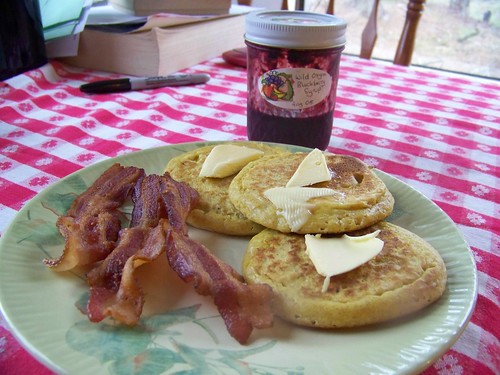
That doesn't mean it's easy to implement.
But then I found a recipe that makes it easy. Last year I was introduced to Sue Gregg's blender batter method of making pancakes and waffles. She uses a blender to grind a mix of whole grains and fermented milk into a slurry that becomes the batter to make your pancakes or quick bread. The more I experiment with this technique, the more I love it. I'm going to write out how I make pancakes here, but I highly recommend that you go visit Sue Gregg's site. She has lots of information, her original recipes and links to buy her books (anyone looking to buy me a birthday present? Yeah, email me, I'll send you my address :)
Her site is here:
http://www.suegregg.com/Blender Batter Pancakes
1 cup whole grain*
1 cup kefir, buttermilk or yogurt thinned to the consistency of buttermilk
1 tbs (or more) liquid fat - melted butter or coconut oil, olive oil, etc.
1 egg
1/4 tsp baking soda
1/2 tsp salt
1 tsp baking powder
up to 1 tsp vanilla extract and/or sweetner of your choice (optional)
The night before you want to make pancakes combine the grain and the milk in your blender. Using the pulse button start to grind the mixture. When the mixture starts to m
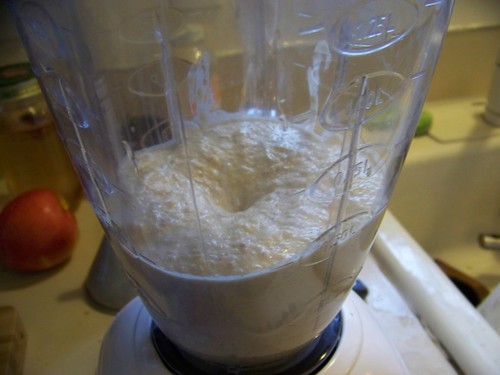
ake a nice vortex in the middle let it run and grind the grains. Sue has you grind it for a full 3 minutes. I usually don't let my cheap blender run that long continuously and even if it doesn't grind the whole 3 minutes it seems to work just fine. Grind it for as long as you can stand it. If it doesn't make a vortex you can add a little more liquid, but do so sparingly. Chances are you have enough liquid and if you add more your pancake batter will be too loose.
Let the mixture of grain and milk sit on the counter for a couple hours or overnight. If your blender is nicer than mine you can just leave it in the blender jar. Mine leaks at the bottom so I scrape everything into a bowl and let it sit on the counter.
In the morning grind the grain/milk mixture again to loosen everything up. Since I probably didn't grind it a full 3 minutes the night before I give it a good grind first thing in the morning. Add the egg and grind it some more. With the blender running ad

d the melted fat. This keeps the fat from clumping when it hits the colder batter. Add the optional sweetner or vanilla.
When you are ready to cook the pancakes (heat up you cast iron skillet, melt a bunch of coconut oil or butter in it, get everything hot, cook your bacon, etc) add the salt and leaveners. Again, do this while the blender is running to avoid clumping.
Cook your pancakes as usual, being sure to give the first one to the dog. That's traditional, remember? :)
*The cool thing about this recipe is that you can use ANY grain you want. The gluten in wheat is not very important when making pancakes so even if you aren't "gluten free"
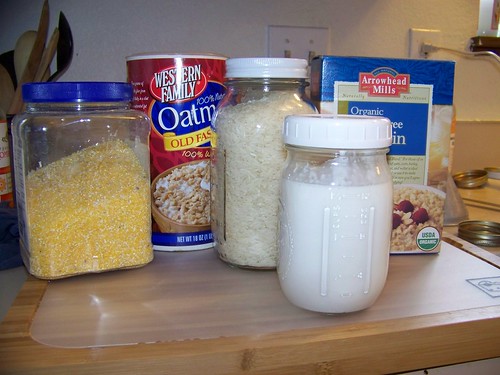
you can make
these that much more healthy by using gluten free grains. I usually use a mix of oats (steel cut or rolled), brown rice (or white), wheat berries, cornmeal, and whatever else I have around. I like adding a tablespoon or more of sesame seeds to the mix and have been known to use my Arrowhead Mills 7 Grain Gluten Free Hot Cereal. Toasted buckwheat, or kasha, makes an amazing pancake! Quinoa, barley, amaranth, kamut, millet - whatever you have or like, use it! Just use one cup total of whatever grains you like.
These pancakes rock. No one would ever guess that they were whole seeds and fermented milk a mere 6 hours before. They generally don't have a "whole grain" texture, are light and fluffy, and incredibly flavorful. You can vary them any number of ways by adding berries or nuts, changing the grains, changing the sweetner and of course changing the toppings. I personally love jam and yogurt, but won't turn down a pancake with butter and maple syrup either.
I
recently used this method to make a cornbread and am excited about branching out into other quick breads and muffins. The batter could also make crepes/tortilla-like-wraps if made thinner. I generally make a double batch and freeze the extras for quick breakfasts later on.
I just can't say enough good about this recipe and method. Give it a try, seriously. It's so versatile, and you feel so accomplished. "I used whole grains, soaked them and I can have a real breakfast all week!"
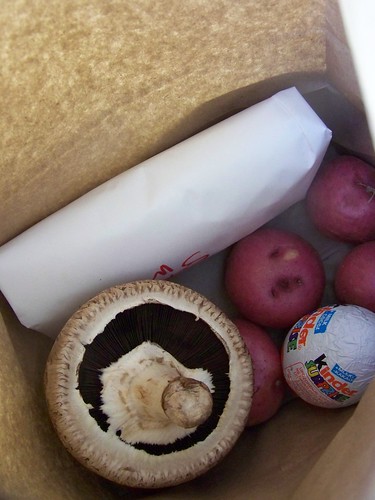 Newman's Seafood (can we just say that it doesn't smell like fish) and produce from a local organic farm (who's name I have forgotten.. sorry!). All in a cute little shop with a crazy flower stand out front. When I am independently wealthy I will shop here every day. Until then, only on pay day and with severe reserve and self control :)
Newman's Seafood (can we just say that it doesn't smell like fish) and produce from a local organic farm (who's name I have forgotten.. sorry!). All in a cute little shop with a crazy flower stand out front. When I am independently wealthy I will shop here every day. Until then, only on pay day and with severe reserve and self control :) o a boil. Turn heat down and simmer for an hour or so, or until the meat is cooked through and the flavors have melded.
o a boil. Turn heat down and simmer for an hour or so, or until the meat is cooked through and the flavors have melded.

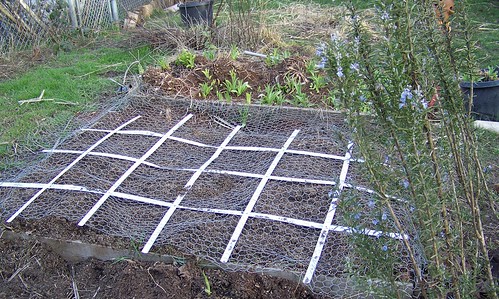



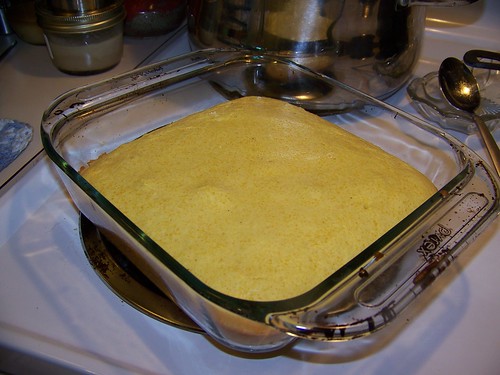
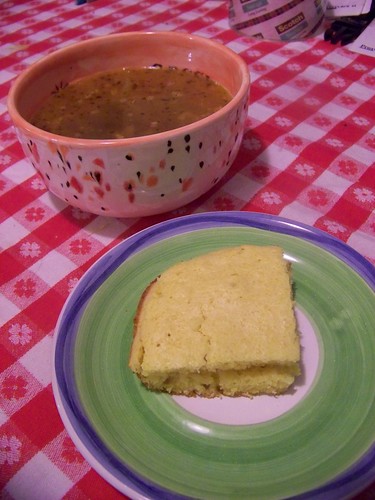





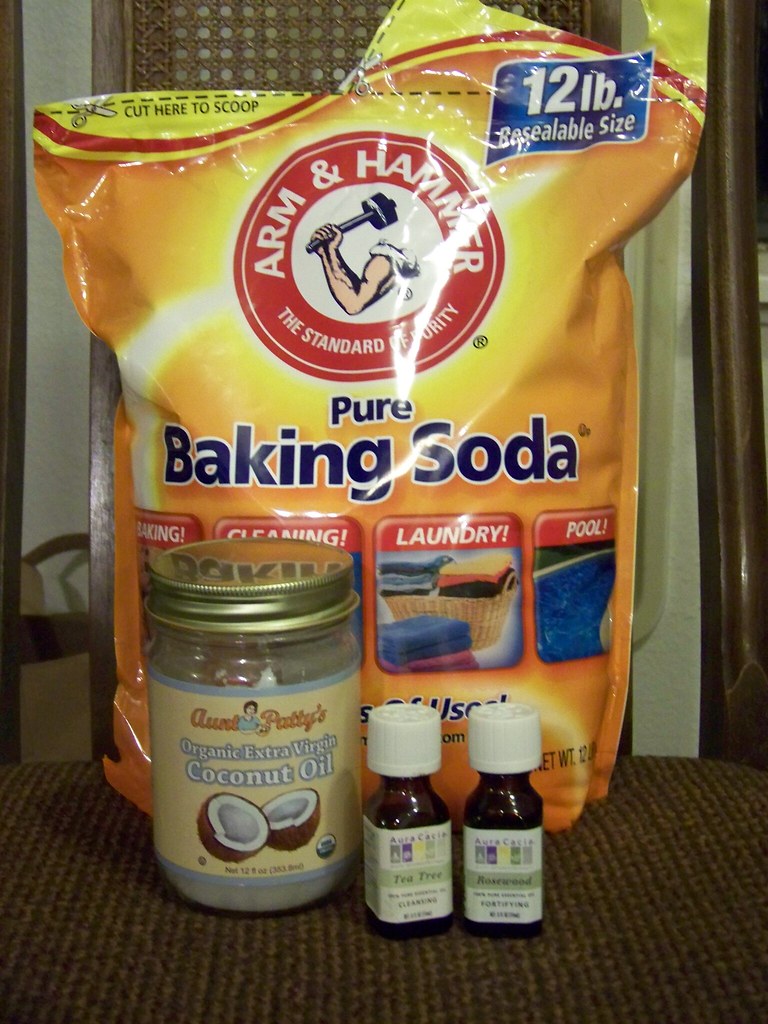




 Sausage and Kale Quiche
Sausage and Kale Quiche